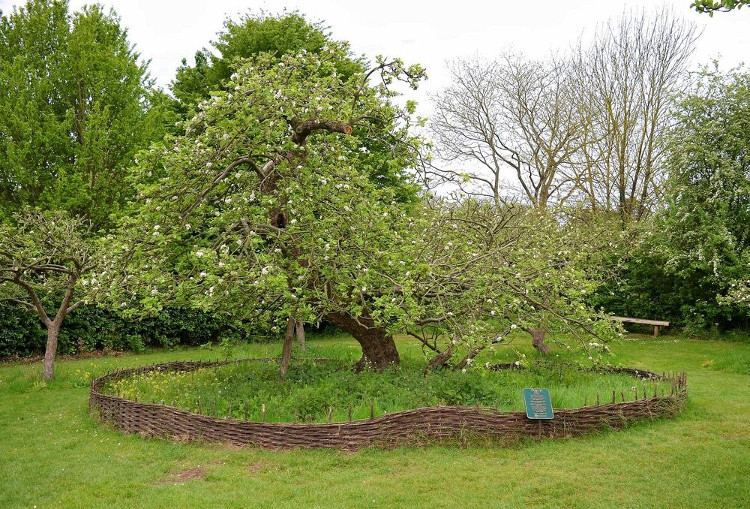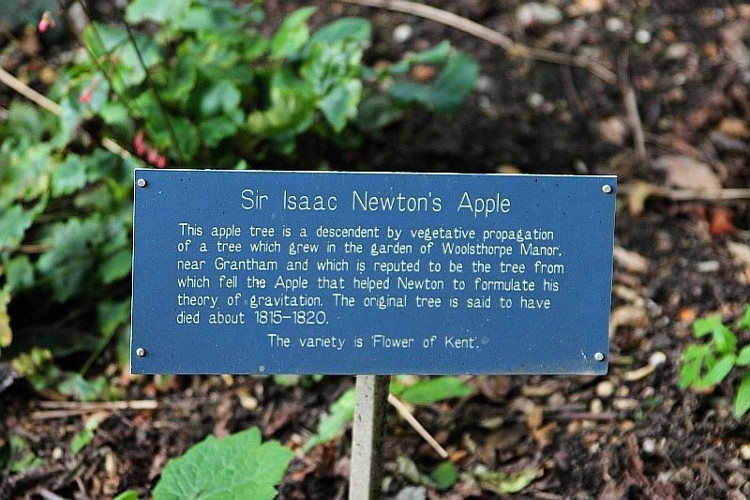The truth about 'Newton's apple tree' 400 years ago
People still tell the famous story of the scientist Newton who was hit by the apple on his head, thus leading to the theory of 'Everything attractive' . But few people know that the apple tree is real and still fresh in the garden in Lincolnshire, England.
The interesting and meaningful story of the great British scientist is still handed down to posterity. On an autumn day, while sitting in a chair in the garden reading a book, suddenly a ripe apple suddenly fell to Newton's head.
Looking at the falling apple reminds the scientist to generate new thoughts. From the concerns about everything that is subject to a gravitational pull, is it the attraction of the Earth, Newton finds the important law with the name 'Everything attractive'.

Newton's story and falling apple is one of the most famous anecdotes of the scientific world.
Newton's story and falling apple is one of the most famous anecdotes of the scientific world. It is said that the story may be painted a few more, such as the details of the British scientist who had the apple fall on his head. But more importantly, there are still facts around it.
The first document on the fall of the apple appeared on the draft of John Conduitt - Newton's assistant at the Royal Mint. He is also the husband of the English scientist granddaughter. In 1726, after the death of Newton, John Conduitt described the event.

Introduction to Newton's apple tree.
In another memoir about Newton's life published in 1752, writer William Stukeley tells the conversation between the two.'We went into the garden, drinking alcohol under the shade of an apple tree. At that time, Newton pointed to the apple on the tree as an example and asked why it fell to the ground, instead of going sideways or flying upwards. ' The writer also asserted, then Newton envisioned a gravitational pull of the earth with all things, but not known.

A "descendant" of Newton's apple tree in Teddington, London, England.
Also according to writer Stukeley, Newton found it interesting to know the apple anecdote falling on his head to help him find the famous law. Although Newton himself did not identify which apple tree in the garden helped him realize the attraction of the earth, people assumed the most luxuriant tree in the garden was the place where the apple fell on the famous scientist's head.

The next generation of Newton's apple tree at Trinity College, Cambridge.
Today, when you arrive in Lincolnshire County, England, you can visit Newton's family's Woolsthorpe manor to see for himself the famous apple tree. It is a completely real apple tree, still green to this day. And the key is, it is associated with an interesting story for Newton to find the law of universal gravitation.

Newton's apple tree was also bred in Goobang, New South Wales, Australia.
According to recorded documents, apple trees were taken care of since the 1750s because generations of the Woolerton family took turns taking care of them. In 1816, a storm swept through and many branches were broken but it still sprouted and luckily did not turn on.
Today, apple trees still exist for nearly 400 years of history, managed and managed by National Trust. This is the organization that preserves the historical and natural heritage of the United Kingdom. This place currently welcomes visitors every year.
- Ancient apple trees spread out with 10 football fields
- Modern apple tree is a hybrid of at least 4 wild apples
- The world's first yellow fleshed apple apple
- Apple tree is poisonous with 50 different apple varieties on 1 tree
- 250 varieties of apples grow together on a tree
- Apple tree with the best cold-resistant fruit
- Steve Jobs anticipated Apple's decline more than 20 years ago
- Video: Boy and apple tree
- The oldest tree in England has changed sex after 3,000 years
- Newton's apple tree is about to die
- Ancient trees have unique and strange shapes all over the world
- Apple will launch Tablet PC in 2010
 Why do potatoes have eyes?
Why do potatoes have eyes? 'Tragedy' the world's largest carnivorous life: Death becomes ... public toilet
'Tragedy' the world's largest carnivorous life: Death becomes ... public toilet Tomatoes were once considered 'poisonous' for 200 years
Tomatoes were once considered 'poisonous' for 200 years Detecting microscopic parasites on human face
Detecting microscopic parasites on human face